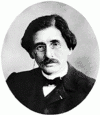Management Fashions and Fads
Fashions are changing modes of appearance or ways of doing things that are popular during certain periods. Fads are usually understood to be short-lived fashions. Management fashions often acquire proper names, which are the names of prototypical action programs that became fashionable, for example, Total Quality Management, Business Process Reengineering, Balanced Score Card. Fads are incipient fashions that fail-fleeting enthusiasms that fade away not leaving a trace. Studies of management fads and fashions are inspired by such disciplines as anthropology, sociology, and cultural studies.
Conceptual Overview
Diffusion Studies
The scholarly interest in managerial fads and fashions can be traced back to diffusion theory, as propagated by the anthropologist Everett Rogers, who, in turn, was inspired by Gabriel Tarde-a French sociologist who was a contemporary and rival of Durkheim. Tarde postulated that imitation is the basic social mechanism and that it is directed toward the imitation of novel inventions; thus he defined fashion.
Tarde's idea of diffusion was far from mechanistic; to the contrary, he postulated that particles diffuse in the same way ideas do, not the other way around. Thus by highlighting the variation resulting from each displacement, he differed from the diffusionists (an early school of anthropology opposing evolutionists), and by pointing out the role of action, that is, imitation, he differed from the evolutionists (he spoke of evolution by association).
Diffusion studies multiplied from the 1920s onward, so that Rogers, writing in 1962, could describe formal characteristics of the process fairly accurately. Diffusion curves tend to be bell-shaped, and patterns of adoption allow one to distinguish between innovators, early adopters, early and late majorities, and laggards.
Interest in the specifically managerial fashions can be traced to the seminal work of Henry Mintzberg from 1979. Following this inspiration, Eric Abrahamson took...


